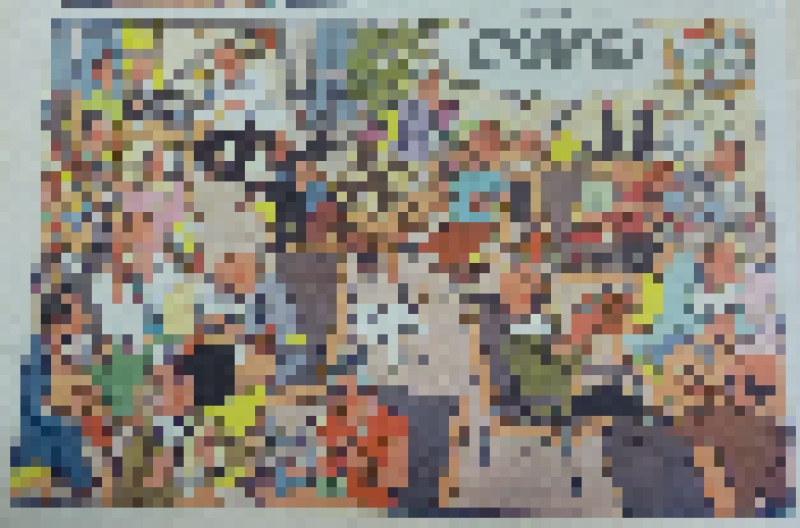Whereas, generally speaking, those designers we feature in these pages have trained as either an architect or carpenter, Jean Prouvé was a blacksmith. Or more correctly a ferronniers d'art. An ornamental blacksmith.
A training that was to give him a singular perspective on the challenges of the age, on aesthetics, on the question of industrial versus artisan production and which endows him and his work with a unique place in the history of European architecture and design.
He is also the only 20th century designer we aware of who has ever had their work featured in The Adventures of Tintin........
Born in Paris on April 8th 1901 as the second son to artist Victor Prouvé and his pianist wife Marie Duhamel, Jean Prouvé grew up in Nancy where his father had co-founded the Ecole de Nancy arts and crafts school. At 15 Jean Prouvé moved to Paris to train as a smith before returning to Nancy in 1923 to establish his own workshop. Initially content with the production of "standard" ornamental blacksmith products - railings, gates, banisters, etc - things began to change in 1926 when Jean Prouvé "discovered" sheet metal, and for all the bending and forming of sheet steel and sheet aluminium. Starting with furniture Prouvé quickly expanded his repertoire to architectural elements and structures, yet always relying on the same folding and binding systems. In addition to realising his own projects Jean Prouvé regularly co-operated with architects on their projects, perhaps most notably in 1930 with Maurice-Jacques Ravazé on Citroën's new showroom in Lyon - the company's first dependence outwith Paris and where Prouvé first used folded sheet steel on a façade - or his numerous co-operations with Charlotte Perriand, Le Corbusier and Pierre Jeanneret. In 1931 ever growing success allowed Jean Prouvé to establish a limited company, "Les Ateliers Jean Prouvé S.A.", which by the early 1950s employed over 250 workers producing furniture and realising architectural projects at the company's facility in the Nancy suburb of Maxéville. The success however came to an abrupt end in June 1953 when differences between Prouvé and Aluminium Français, as major shareholder, saw Jean Prouvé leave the concern. And although he continued to work on architectural and engineering projects, June 1953 effectively marks the end of Jean Prouvé's career as a furniture designer.
His works however didn't fall into forgetfulness, as playfully demonstrated by the inclusion of a Fauteuil visiteur - Visitors Armchair - in Hergés classic "Tintin in Tibet". Published in 1960 Tintin in Tibet opens with Tintin, Snowy and Captain Haddock enjoying a holiday in the Hergeian alpine resort town of Vargèse. Or at least Tintin is. Snowy fears for his feet on the rocky mountain terrain and Captain Haddock, while enjoying the Alps as scenery, is firmly of the opinion that "mountains should be abolished". Following dinner in the Hotel des Sommets, Tintin and Captain Haddock are playing chess when Tintin, no doubt tired by the champagne-esque mountain air, drifts off.... and awakes with a start. The half-page illustration depicting the commotion in the hotel lounge as Tintin awakes shows other guests, most prominently Tintin's acquaintance Professor Calculus, relaxing in Fauteuil visiteurs. And then the chairs are gone. And there follows a highly engaging, and tintintypically adventurous, trip to Tibet in search of Tintin's friend Chang. A trip that involves runaway cows, avalanches, Buddhist monks, yetis and more blistering barnacles, great snakes and thundering typhoons than you can shake an ice axe at. All highly entertaining stuff.
Almost as entertaining is the story of the development of the Fauteuil visiteur. Almost.
The Fauteuil visiteur first appears as a sketch in a July 1941 portfolio of furniture designs intended for the Solvay Hospital project by Nancy architects' Jacques and Michel André; a portfolio that also includes the first sketches of what would become the Guéridon table and the EM Table. Initially sketched by Jean Boutemain the draft was adapted in February 1942 by Jean-Marie Glatigny, and re-draughted again two weeks later by Jean Boutemain. Both Glatigny and Boutemain belonged to the "research and design team" Jean Prouvé established upon opening his second workshop in 1931. A team whose very existence demonstrates just how long the product design world has been reliant on unsung, unnamed creatives, technicians and engineers working in the shadows.........
The Solvay Hospital project was never realised, but in 1948 Les Ateliers Jean Prouvé released the Fauteuil visiteur as a product in its own right, and over the subsequent five years made the chair available in a range of versions, including a reclining version with an adjustable backrest.
If we've judged things correctly the version in which Professor Calculus sits in Tintin in Tibet is a FV 13 from 1948/49.
We could of course be mistaken.
Much like a Gerrit T. Rietveld, Jean Prouvé's work had and has parallels to what his contemporaries were doing, while being unmistakably a canon of work that exists for itself. For example, as Jean Prouvé was developing his furniture from folded sheet steel, aluminium and solid oak, contemporaries such as Mart Stam or Marcel Breuer were experimenting with bending steel tubing and moulding plywood.
Same. But very different.
And whereas we're all use to seeing examples of classic furniture design being used in film, television, photographs and advertising to stimulate a particular cultural reference in the observer and so portray a desired atmosphere and/or emotion ... Designer furniture in a comic?
Same. But very, very different.
Happy Birthday Jean Prouvé! (At this point we should obviously publish an impression of the scene from Tintin in Tibet. However owing to "contractual complications"......)
